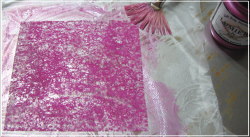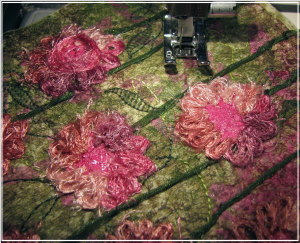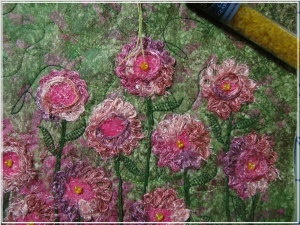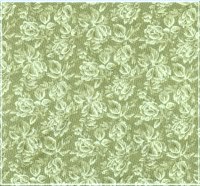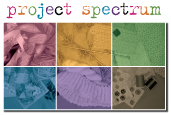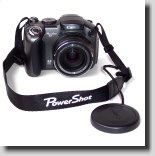
Several years ago I met a woman at a guild meeting who shared my interest in fiber art. We talked for hours, well after the meeting had closed and all participants had departed. We’ve been fast friends ever since. Every time we talk, I come away recharged and anxious to begin some new project. I hope you have someone like this in your circle of friends.
All this to say, I hung up the phone last week after a long conversation with this same friend and headed for the paints. It was a beautiful sunny day, and I was itching to apply color to fabric. I chose four colors of Setacolor Transparent Paint and took them outside.

Setacolor Transparent Paints
Next, I gathered the usual painting supplies and set up an area to paint on our picnic table. I then walked around the yard and gathered some maple, poplar, oak, fern, and boxwood leaves.

Collection of Leaves
I took my little nature collection inside and pressed the assorted greenery between two paper towels, adding the weight of a quilting ruler on top. Flat items work best with sun painting.

“Leaf Press”
When I returned to the picnic table, I noticed a few clouds in the sky but kept working. First, I placed my PFD Kona cotton fabric square in a stainless steel pan and sprayed it with a little water.

Dampened Fabric
I then painted the first piece of fabric, making sure the entire piece was covered. White areas do not work when transferring designs.

Painted Fabric
I placed the wet piece on a prepared foam board covered with a white trash bag. Next, I placed fern leaves on the surface, pressing them down with my fingers. Items usually stick to the paint, which helps to keep them flat.

Fern Pattern
As I prepared to paint the second piece, I felt a few sprinkles. My beautiful sunny day quickly changed into a stormy, windy, downpour of a day. So I grabbed my painting supplies and headed for the patio. Since the air had become so damp, I knew my piece wouldn’t dry very quickly.
After a short time, the sun returned and I went back to work. I painted three more pieces of fabric and placed the leaves I had collected on the surfaces. I then set them all in the sun. Since there was a lingering breeze, I placed a few pebbles on top of the leaves to hold them in place.

Maple Leaf Patterns
About 20 minutes later, my four fabric squares were dry. My husband had just returned from the golf course, saw my leaf-covered fabrics, and told me to wait for him before I removed the all the toppings. There’s always the “Ahhhh” effect when you first see the transferred patterns on the fabric and he didn’t want to miss it.
So off came the leaves and there we stood gazing at our little gifts from the sun. It’s never loses its thrill.

Sun Painted Ferns
In recounting my day of sun painting, I mentioned most of the information you need to do this yourself. Here it is in review.
1. Use Setacolor Transparent paints. You can mix them or apply as many colors as you like to your fabric. Cover all white areas.
2. Prepare your cotton fabric by prewashing to remove any sizing or use PFD fabric. Iron it to remove wrinkles.
3. Have all your supplies close at hand (brushes, paper towels, water, spray bottle, paints)
4. Flatten the items you wish to use as patterns.
5. Protect the painting surface.
6. Work quickly.
7. Keep fabric flat.
8. Spray fabric with water before painting.
9. Remember, painted fabric always looks darker when wet.
10. Secure your patterns if it’s a windy day.
11. Peak under one of your patterns when the fabric appears to be dry to see whether you have achieved the desired effect.
12. When fabric is thoroughly dry, press for 2-3 minutes at a cotton setting to set the paint.
So what kinds of things can you use as patterns when sun painting? We’ll explore the possibilities in part two.
~~~~~~~~~~~~~~~~~~~~~~~~~~~~~~~
Rene
Time Treasured






































